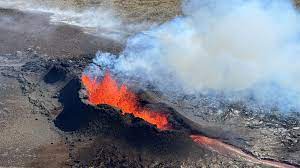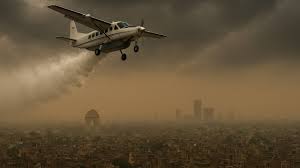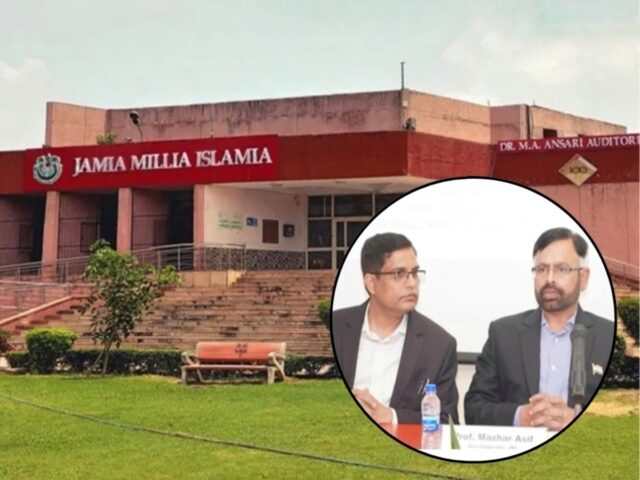Big volcanic eruption after 800 earthquakes in Iceland, 3.5 km long crack formed in the earth, panic

After 800 earthquakes, a volcano has finally erupted in Iceland. A volcano has erupted on the Reykjanes Peninsula in southwestern Iceland after weeks of intense earthquake activity, the country’s national meteorological office said Tuesday. “The eruption was located near Sundhanukagir, about 4 km northeast of Grindavik, and could be seen on nearby web cameras,” Xinhua news agency quoted the Icelandic Meteorological Office as saying. It said the eruption began at 10.17 pm, following an earthquake that began around 9 pm on Monday.
The office said that the length of the crack in the volcano is about 3.5 km, in which lava is flowing at the rate of about 100 to 200 cubic meters per second. It said it was several times larger than previous eruptions on the Reykjanes Peninsula in recent years. A Coast Guard helicopter has been dispatched to the area to confirm the exact location and size of the explosion. The National Police Commissioner of Iceland raised the civil protection service level from alert to emergency in response to the explosion. Civil Defense Coordination Center has been activated.
4000 people were evacuated before the volcanic eruption
Authorities have asked the public not to go to the blast site and emergency workers are assessing the situation. All roads in the city of Grindavik are closed and traffic is restricted, including Highway 41, the main road on the northern part of the Reykjanes Peninsula, connecting the greater Reykjavík area and Keflavík International Airport. The eruption can be seen from the capital Reykjavik, about 42 km north-east of Grindavik. Local news outlet RUV quoted Prime Minister Katrin Jakobsdottir as saying that defensive fortifications that recently began construction would make a significant difference in dealing with volcanic eruptions.
PM Katrin said her thoughts were with the local community and she was hoping for the best despite the ‘significant incident’. President Gudni Johansson said that safety of life is the main priority but every effort will be made to protect structures as well. Since October 24, Icelandic meteorologists have been monitoring an increase in seismic activity on the Reykjanes Peninsula, which could be a sign of an imminent volcanic eruption. As a precautionary measure, authorities completed the evacuation of approximately 4,000 residents from the town of Grindavik on the Reykjanes peninsula on 10 November. In April 2010, the widespread ash cloud caused by the Eyjafjallajökull volcanic eruption resulted in the largest closure of European airspace since World War II. The deficit was estimated at between 1.5 billion and 2.5 billion euros.







